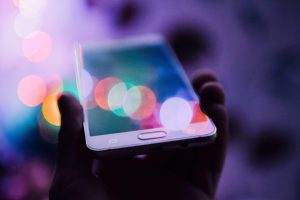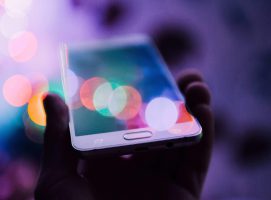The Covid-19 pandemic has changed all our lives in unexpected ways. It is not just the global economy and the physical and mental well-being across the globe has suffered a serious blow. In just a few short months our lives have also become more digital than ever. The ability to stay connected is now key to adapting to the crisis. As a result, the ‘digital divide’ has become more painfully clear than ever.
The ‘digital divide’
The ‘digital divide’ is the gap between those with access to modern communication technologies and those who do not. (Steele, 2019) According to a press release from International Telecommunication Union (ITU) in November of last year, there are still 3,6 billion people in the world that are not yet online. (ITU, 2019)

However, the ‘digital divide’ is not only about having access to the internet. There are several other elements that are associated with the divide. First is the need to have access to a device that allows you to actually connect to a network. Secondly, a person needs to have basic knowledge how to browse. Lastly, capability to turn the information found online into knowledge is a necessity. (Kerras et Al, 2020) Of those lacking these essentials, the majority are women. This is referred to the gender digital divide. (Digital Divide Council, 2019)
ICT and the pandemic
ICT’s can play a pivotal role in achieving transformations on social, economic and environmental levels in our societies. (Kerras et Al, 2020) . For example, ICT can lead to economic empowerment for individuals and increase of e-commerce and as a result give the economy a boost. (Steele, 2019) Because of current events, workplaces have become dependent on digital solutions. Those who are not able to keep connected will fall behind.
Information and Communication Technologies are also crucial in terms of education. Today, access to the internet is a tool for advancing your skills and is linked to academic success. (Steele, 2019) The digital education gap was serious even before the pandemic broke out. However, many schools and universities has the last months been forced to rely on e-learning. Quality education becomes more difficult than ever for those that are on the wrong side of the divide.
Uneven distribution of access to ICT also risk creating segregation between groups in our societies. The internet is not only a social platform to connect with friends and family, but also allows connectivity over social ‘borders’. (Steele, 2019)
The Covid-19 pandemic risks setting us back, especially when it comes to the fight against inequality. According to the UN:
”Socially marginalized groups, including rural communities, persons with disabilities, young people and children, and women and girls, who are often excluded from digital development opportunities, are disproportionately affected.”
UN in their Goal of the Month in May 2020.
Looking to the future
I believe that we are all painfully aware that the world was not prepared for this crisis. While the issue of the ‘Digital Divide’ is not new, new light has been shed upon it because of recent events. It is now more important than ever to bridge the gap and ensure connectivity for all.
As an immediate response to the crisis, ITU launched an action plan together with their partners. This involved, for example, increasing bandwidth and help tech companies to support the communities that are most affected. However, ITU also argues that looking to the future, the world has to see the issue of the ‘digital divide’ as it would a new emergency. (ITU, 2020)
I could not agree more. We need to take it seriously and do all we can to minimize the gap. If not, we will never win the fight against inequality.
References
ITU, Nov 5 2019, New ITU data reveal growing Internet uptake but a widening digital gender divide. International Telecommunication Union, Retrieved from: https://www.itu.int/en/mediacentre/Pages/2019-PR19.aspx
ITU, April 29 2020, ITU and partners launch action plan to boost digital connectivity during COVID-19 – and beyond, International Telecommunication Union, Retrieved from: https://news.itu.int/itu-and-partners-launch-action-plan-to-boost-digital-connectivity-during-covid-19-and-beyond/
Kerras, H., Sanchez-Navarro, J.L., Lopez-Becerra, E.L., de-Miguel Gomez, M.D., 2020, The Impact of the gender Digital Divide on Sustainable Development: Comparative Analysis between the European Union and the Maghreb, Sustainablity 2020, 12, 3347, MDPI AG
Steele, C., 22-02-2019, What is the Digital Divide? Digital Divide Council. Retrieved from: http://www.digitaldividecouncil.com/what-is-the-digital-divide/
UN, May 2020, Goal of the Month – May 2020 , United Nations. Retrieved from: https://www.un.org/sustainabledevelopment/goal-of-the-month-may-2020/#digital


